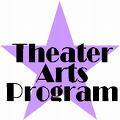
Theater Arts Reviews
|
French Opera
Theater Arts – French Opera
French opera is the traditional opera of France and was spread from Italy. It was Cardinal Mazarin a reagent of King Louis XIV who presented the first opera named “La Finta Pazza” in the year 1645. This inspired King Louis XIV and he was the one behind the flourishing of opera in France. The father of French opera was Jean-Baptiste Lully; he presented “Cadmus et Hermione” in the king’s court. After seeing that performance, the king’s interest increased even more. This encouraged Lully to make “Tragedie En Musique”, also known as tragedies en musique, along with Philippe Quinault. It was the tragic story of Corneille and Racine and it was a dance musical with choral writing. Lully was famous for composing music for plays meant for court as well as many other theaters. Cadmus et Hermione was the first French opera of Lully in Paris.
This pair was also known for altering the complex and detailed Baroque plot. They made a five-act structure instead. Before the performance praises were sung for King Louis XIV this was inspired from Italy who sung allegorical prologue instead. It then started with an aria which was followed by recitative and a short aria which was elaborately modeled keeping the French taste in mind and was appreciated many times. It then ended with divertissement. It was the most important factor as it involved lots of singing, dancing, and lots of entertainment which was the main attraction for the audience. In the mid of eighteenth century “opera Comique” another opera genre caught the fancy of the people in which dialogues and arias music were used. Huge efforts were put in to make the performance a success and especially to win the heart of the king. The stage was set with lots of details and special effects known as machinery in which Olivet did the choreography and Quinault wrote the phrases.
Lully had acquired the whole market by befriending the king. It was only after his death that the other composers got a chance to show their talents. Marc-Antoine Charpentier was one such opera composer who wrote and presented his first “Tragedie en mMusique”, “Medee” in the year 1693. As he had some Italian connection this disappointed Lully’s fans and hence it received a mixed reaction. Andre Campra and Marin Marais also made their attempts at Tragedie en Musique. Campra later created a new type of opera known as opera ballet. It had more dance and musical element in it. A lot of comedy was also included with a light storyline. This was different from what Lully used to compose and it proved to be a good change for the audience with it’s over whelming response. This gave the idea of involving comedy completely into the performance. This was done by Mouret who used this style in his work Les amours de Ragonde.
Another composer, Jean-Philippe Rameau became a very important part of the history of French opera after Lully. His first work Hippolyte et Aricie was at the age of fifty. He used a lot of experimentation which created a stir in the audience. Although Campra appreciated it most of the fans of Lully were shocked. This created a clear line of separation between the audiences. This made Rameau to follow the existing rules. But this time he was opposed by the Italian counterparts who called him old-fashioned. This was when Rameau created a new opera genre known as opera Comique. Theater De I’Opera-Comique worked on this idea and became very famous in the eighteenth century. Even in the twentieth century composers such as Reynaldo Hahn and Andre Messager wrote many works in opera Comique.
Even to this day the French Opera is alive and popular in many quarters of the country.
 |
 |
 |
Classification Based On Different Themes Arts
The Golden Age Of Greek Theater Arts
More Theater Arts Articles
... Javanese kingdom was shifted from Prambanan located in central Java to Jenggla located in eastern Java. This kingdom was divided into four parts namely Jenggala, Kediri, Ngurawan and Singasari. The four sons of the King Airlangga named King Lembu Amiluhur, King Lembu Amerdadu, King Lembu Mangarang and ...
... wore detailed makeup. Aragoto complexion or the reckless warrior character has a haughty role with bright clothing and loud makeup. The style too is loud and exaggerated and involves more action. On the contrary Wagoto is a more cultured role harbour decent dialogue delivery and gestures. The Genroku ...
Various Dance Forms Of India Relating Theater Arts
... storyline with the help of facial expressions and hand gestures. Dancers wear bells or Ghungru on their feet and with their footwork used to synchronize with the accompanying Indian classical instruments such as Pakhawaj or Tabla at a lightning speed. The shows were hosted in temple and village squares. ...
... Aikyogen during the breaks in the play. Hayashis plays the four instruments of Noh, which are flute or Fue, stick drum or Taiko, hip drum or Okawa Otsuzumi and shoulder drum or Kotsuzumi. The chorus comprises of midpoint eight people and is known as Jiutai. The helpers are known thanks to Koken. The stories ...

|
| Copyright © 2006-2012 Internet Marketing Tools, All Rights Reserved |